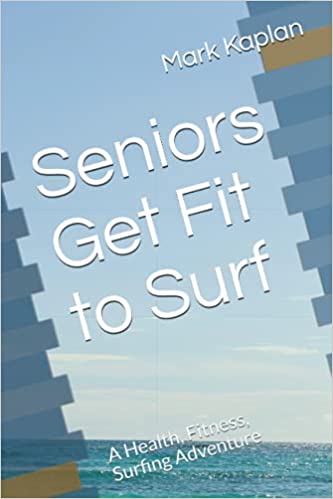Learning to Catch Bigger Waves on a Soft Top Surf Board is a good step for intermediate surfers. The 8′ soft top build by Wave Storm and other manufacturers can be good tools in real waves. The intermediate is not yet making deep carves or doing tricks, so he can learn to ride waves first.
The soft top surf board is a great board for learning in the foam. I start most teens and adults on a 9′ soft top until they have learned the proper pop up and can ride straight to the beach. The they are ready to paddle out and catch bigger foam waves and start with small green waves.
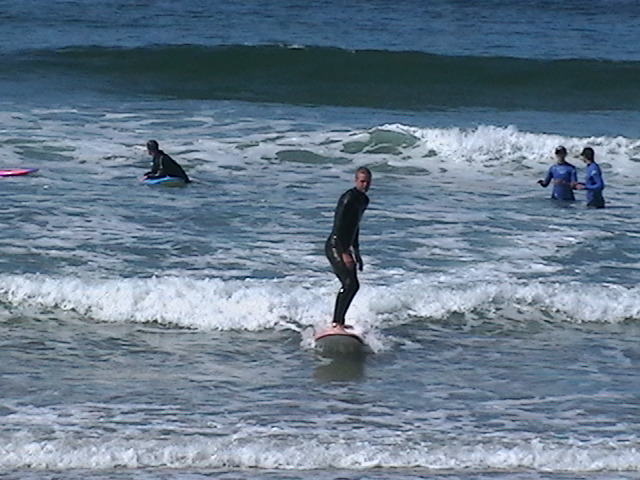
Catching Bigger Waves on Soft Tops
This practice leads to better timing and positioning. Real waves break in a small window unlike foam waves that roll for a long time. The first thing is to understand the timing. Waves break differently on sand bar beaches every day and during the day. Reefs are more consistent. The line up is a good indication of where to sit to catch waves.
Note that most people in the line up are on short boards and will catch waves later than a soft top if you are on a reef break. Boards with greater volume can catch them earlier as they form. On a sand bar beach, waves will break steep and often close out quickly. This makes the need for timing more precise.
The first small green waves should be caught down the face. This is a good time to also start seeking corners. The corner forms after the wave has broken and is unfurling right or left. The corner is caught at a 45 degree angle towards the beach and ridden at that same angle. At this point the intermediate is just driving the wave until it dies.
As the surfer moves to bigger waves on sand bar beaches, they may ride down the face or learn to push the nose toward the pocket after they have caught the wave but before they pop up. This gives them a head start on the unfolding lip so they don’t get caught right away. At this point the surfer should learn how to accelerate by pushing the nose of the board up and down the face with their front foot.
The surfer can also start practicing cut backs and bottom turns. The bottom turn gets him into the pocket after riding down the face. The cut back allows the surfer to return to the power when the wave is running out of steam.
Catching bigger waves needs new increments of courage. Learning will result in some crashes and a surfer needs to develop the tolerance and even laugh off the bad falls. If a surfer is afraid of crashing he may not try bigger waves. That doesn’t mean don’t respect your limitations.
Learn in size increments and practice all the carves. You can have lots of fun at each level. Learn to recognize which waves you can ride and watch others before you get in. Respect everyone’s turn in the line up and they will respect you. When you paddle for waves, you want to catch them and ride them to maintain your respect in the line up or in aggressive surf areas they may not let you have waves.
If there are a few places where waves are breaking along the beach, start with those away from the advanced surfers and you will have more freedom. These differing breaks are usually found on sand bar beaches. Get stronger and develop stamina. Each increment of size requires more skill and strength.
Read a good book to get ready.
Visit the Home Page for Surf Lessons
See my new website Get Fit to Surf.com
Learn More
Get the Learn to Surf Guide Course in Kindle, Paperback or Audio
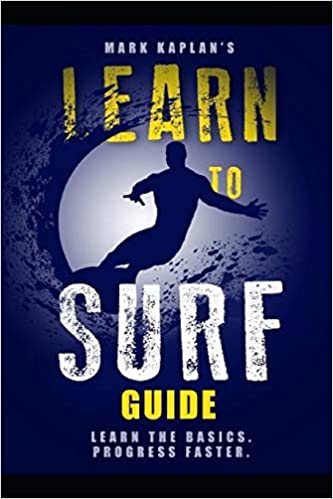
A great 29 page course on the fundamentals of catching waves, doing beginner and advanced pop ups, riding real waves, how to do maneuvers on real waves, which surfboards to ride, and how to progress. Great for lesson preparation, after lesson review, or learning on your own.
Kindle price $2.99 on Amazon. Paperback price $6.95 on Amazon. Audio download price $7.95
Get Fit to Surf
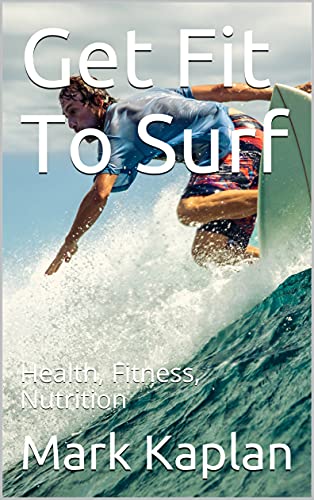
A great guide to strength, flexibility, stamina, and leanness for surfing. Beginner strategies for getting stronger, more flexible, stronger cardiovascular system, and nutrition to lose weight. An improving surfer or one who wants to prepare must meet the whole body physical demands of surfing. Getting stronger improves ones ability to perform better.
Buy on Kindle for $5.99 or the Paperback for $7.99
Every Body Can Surf
To read a great book for getting in shape to surf or getting in better surfing shape, read my new book Overweight People Can Surf, a Health, Fitness, Nutrition, and Surfing Adventure
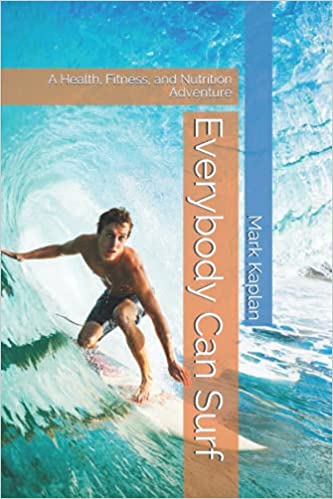
Description:
Get healthy and fit to surf or set a goal of surfing to improve weight, fitness, nutrition, and health. This guide by a surf instructor/health coach/personal trainer gives the short version of how to lose weight, get strong, build stamina, develop nutrition, and learn to surf. Surfing is a lifestyle enjoyed by millions and so is fitness. Fitness creates opportunities to enjoy life through lots of different kinds of recreation. No need to stand on the sidelines while others are having a great time. Start your program to health with easy steps and progress at your own pace. That is the secret to maintaining a lifestyle. Do it at your pace. This book will start you on the path.
Buy the E book on Amazon for $5.99
Buy the Paperback on Amazon for $7.99
Seniors Get Fit to Surf
Description:
Seniors often ask if it is too late to learn to surf. Age is functional not chronological. If people have been exercising and maintaining body strength, surfing can be accomplished. If people have not been exercising, then getting in shape to surf could be a life changing move. Learn how to develop strength, flexibility, and stamina to learn surfing. If you are in surf shape, you could pursue most any recreation.
Buy the E-book on Amazon for $5.99
Buy the Paperback on Amazon for $7.99
